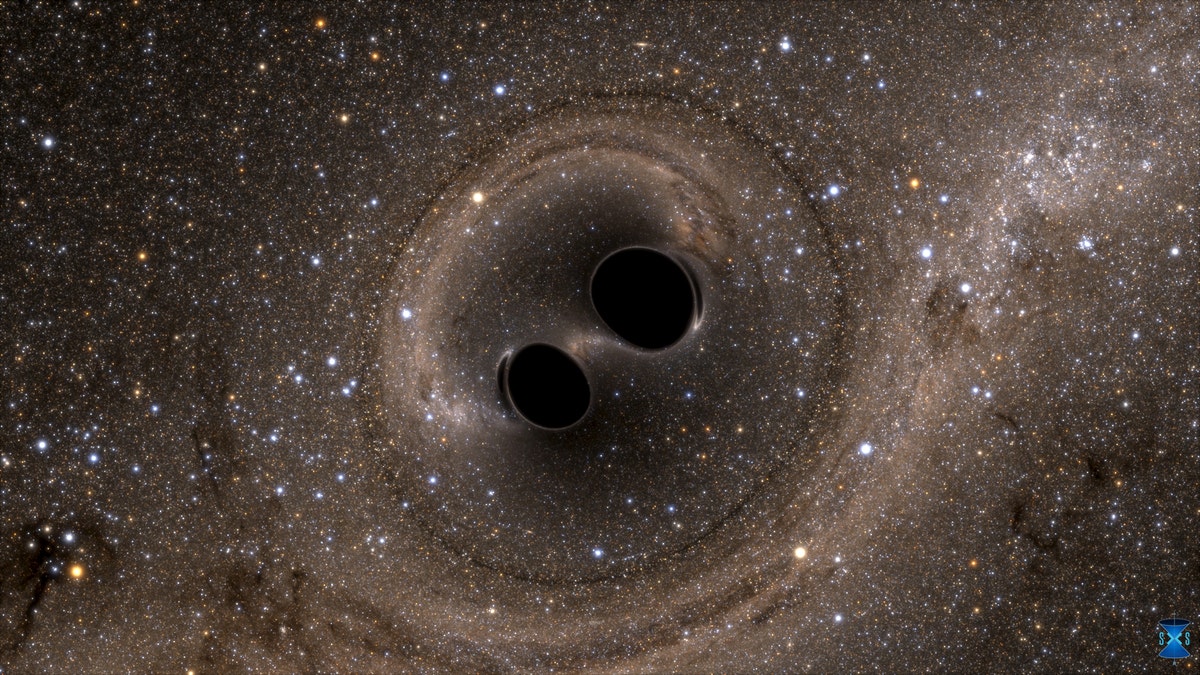
File photo: The collision of two black holes - a tremendously powerful event detected for the first time ever by the Laser Interferometer Gravitational-Wave Observatory, or LIGO - is seen in this still image from a computer simulation released in Washington February 11, 2016. (REUTERS/The SXS (Simulating eXtreme Spacetimes)/Handout via Reuters)
The world’s most powerful X-ray laser beam has been used to create a tiny microscopic “black hole."
The machine uses extremely bright, fast flashes of light to take atomic-level snapshots of some of nature’s fastest processes.
A single pulse stripped all but a few electrons out of one atom from the inside out.
This left a void that started pulling in electrons from the rest of the molecule – like a black hole gobbling a spiralling disk of matter.
It’s hoped the breakthrough will lead to advanced ultra-high-res images of viruses and bacteria – and the development of better drugs.
Staff scientist Sebastien Boutet, of Stanford University’s SLAC National Accelerator Laboratory, said the X-ray pulses are about a hundred times more intense than focusing all Earth’s surface sunlight “onto a thumbnail.”
The experiment was carried out using the California-based lab’s Linac Coherent Light Source (LCLS) – the most powerful x-ray laser in the world.
Within 30 femtoseconds – millionths of a billionth of a second – the molecule lost more than 50 electrons, far more than expected.
Then it blew up.
